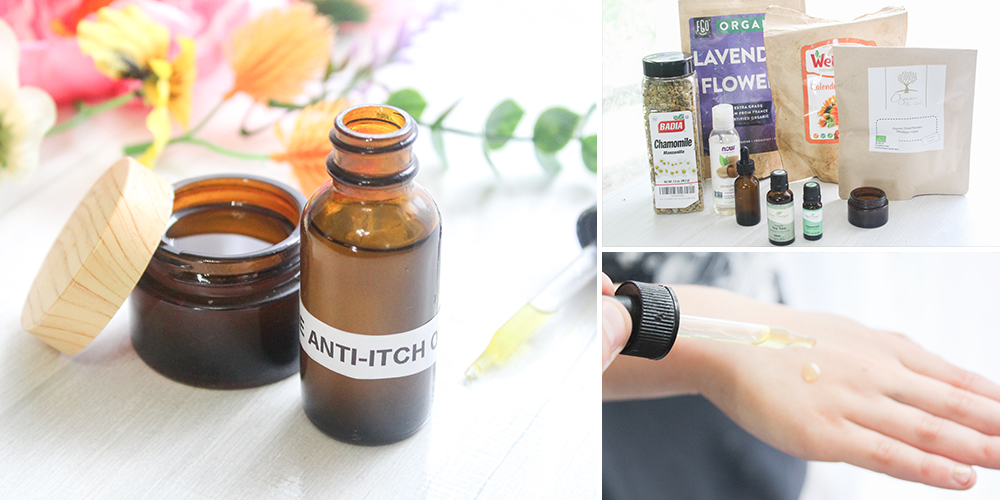
Homemade Anti-Itch Oil
Do you have an itch you just can’t seem to scratch? It’s no secret that itching is one of the most annoying symptoms, often affecting your day-to-day life. Thankfully, there are all-natural solutions, like our Homemade Anti-Itch Oil, that can tame the beast. Whether itching because of a bug bite, hives, or a skin disease like psoriasis, this silky smooth oil will give your skin an audible sigh of relief.
This Homemade Anti-Itch Oil is infused with soothing herbs like lavender, chamomile, calendula, and plantain leaf. When combined, the herbs synergistically soothe skin and help speed healing. Plus, the recipe is easy to make and can be used on kids and adults. Keep reading to discover how to make an all-natural anti-itch remedy.
Why Does My Skin Itch?
Those with skin conditions like psoriasis, eczema, and shingles know that irritated skin goes along with the title. Skin can also itch because of sunburns, hives, bug bites, and even scars. Whoever you are, you can’t escape the occasional itch. But why does the skin itch?
When your skin itches, it signals to the body that it is inflamed and needs a little TLC.
Nerve receptors translate skin irritation into an itch, alerting your brain to scratch the skin in hopes of removing the intrusion. The only problem? Scratching often leads to more scratching, which can irritate the skin further.
If your skin is chronically itchy, the best thing you can do is avoid scratching and nourish your dermis with healing herbs and healthy remedies, such as our Homemade Anti-Itch Oil.
Alongside our Homemade Anti-Itch Oil, you can soak in a colloidal oatmeal bath or explore dietary changes. Everyone’s body is different, so we encourage you to experiment and see what works best.
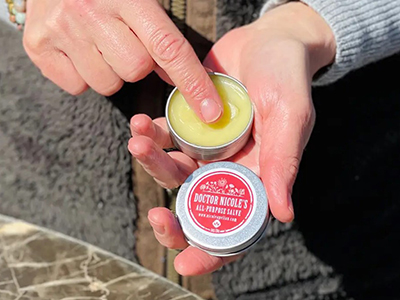 Scratching your itching too much will cause skin damage. This can disrupt the skin barrier, making it more susceptible to infections and irritants. I strongly recommend applying a soothing remedy that helps the skin regenerate. The salve I’m using and has proven useful is the All-Purpose (First Aid) Salve. Check it out here and see the customer-reported uses. It has more than you think!
Scratching your itching too much will cause skin damage. This can disrupt the skin barrier, making it more susceptible to infections and irritants. I strongly recommend applying a soothing remedy that helps the skin regenerate. The salve I’m using and has proven useful is the All-Purpose (First Aid) Salve. Check it out here and see the customer-reported uses. It has more than you think!
Homemade Anti-Itch Oil Ingredients
The herbs in our Homemade Anti-Itch Oil have been specially chosen to soothe and nourish skin from the inside out. Here’s what you’ll find in this all-natural remedy.
Lavender
Lavender is antifungal and antibacterial, making it an excellent natural remedy for eczema, bug bites, and any sort of contact dermatitis. It is also a great wound healer, lightening dark spots and reducing the appearance of scarring. If your rash is painful, you’ll be overjoyed to learn lavender has pain-relieving properties.
Calendula
The brilliant yellow calendula flower, or pot marigold, is among the gentlest skin treatments. It reduces inflammation and swelling in the skin and is often used in diaper rash creams and breastfeeding ointments. Applying a Homemade Anti-Itch Oil with calendula boosts collagen levels, creating beautiful, moisturized skin.
Plantain Leaf
If your garden hosts plantain leaves, consider yourself blessed. This common weed can block bacteria from entering wounds, which is vital when handling rashes or skin irritations. When combined with aloe vera, plantain is a powerhouse that can be used internally or externally.
Chamomile
For centuries, people have been harvesting chamomile for its calming properties. A little chamomile goes a long way, soothing hectic emotions or annoying itching. Chamomile is among the most popular teas, often paired with lavender. It is part of the daisy family and is as beautiful as it is practical.
⇒ How To Grow Pesticide-Free Chamomile and Lavender (Video)
Coconut Oil
Coconut oil is an excellent emollient that provides the skin with antibacterial benefits. If you want an oil instead of a cream, use fractionated coconut oil, which remains liquid. However, the fractionation process may take away some of the medical benefits. You can also use jojoba, sweet almond, or extra-virgin olive oil.
Tea Tree Essential Oil
Skincare and tea tree are best friends; many use this essential oil in acne remedies. Tea tree is also a great antifungal agent that can relieve itchy scalps and skin. Studies show that tea tree essential oil is more effective than over-the-counter anti-itch creams.
Peppermint Essential Oil
The menthol in peppermint essential oil provides instant relief to itchy skin, giving off a cooling sensation. Peppermint is especially effective for relieving histamine reactions, making it the ideal addition to any Homemade Anti-Itch Oil. This one is a bit stronger, therefore I wouldn’t recommend it for children under 6.
Yarrow Tincture
Yarrow tincture is one that everyone should have in their herb kit! This botanical contains antibacterial properties. If you want to target more than your itch, yarrow is your go-to remedy. Applied topically, Yarrow can be helpful in managing rashes, minor skin infections, wounds, and itching. It also helps you relax during illness and helps your body fight against fevers, colds and flu symptoms. It’s double-extracted to extract the full spectrum of compounds. Check it out here!
Homemade Anti-Itch Oil Recipe
This Homemade Anti-Itch Oil Recipe utilizes ingredients from one’s backyard, a local or online apothecary, and Amazon. This remedy relieves pesky itching, boosts collagen, promotes wound healing, and eliminates infection.
Plus, one recipe makes enough to last a season. It’s a fabulous tool to keep in your own medicine cabinet or gift to a loved one struggling with psoriasis, hives, contact dermatitis, or eczema.
 Ingredients
Ingredients
- ½ cup dried lavender flowers
- Yarrow Tincture
- ½ cup dried calendula flowers
- ½ cup dried chamomile flowers
- ¼ cup dried plantain leaf
- 2 cups melted raw coconut oil, sweet almond oil, olive oil, or jojoba oil
- 10 drops of tea tree essential oil
- 10 drops peppermint or lavender essential oil
Instructions
- Fill a saucepan with a few inches of water and bring to a brisk boil. Lower the heat to bring the water to a simmer.

- Place the lavender, calendula, chamomile, plantain leaf, and carrier oil in a double boiler. Set over the saucepan and let simmer for several hours to infuse the oil. You’ll know your Homemade Anti-Itch Oil is ready when it changes color and takes on the scent of the herbs.

- Strain the infused oil into a large glass jar or measuring cup using a fine mesh strainer or cheesecloth. Be sure to press the herbs to get every drop of precious infused oil.

- Stir in the tea tree and peppermint essential oils. Transfer to an amber glass jar or dropper bottle and let cool before using.

How to Use Homemade Anti-Itch Oil
Apply topically to relieve itchy, dry, or flaky skin. This remedy may not cure psoriasis, contact dermatitis, hives, or eczema, but it can relieve itching, which can make all these conditions worse. Homemade Anti-Itch Oil is a great companion during dry winter or warm seasons when bug bites are prevalent.
To use, apply to the affected area 1-3 times daily. You shouldn’t need more than a few drops, giving you more bang for your buck. If you have sensitive skin, we recommend applying a drop to a “test” patch to see how you react. This remedy should be used externally; we don’t recommend internal use. 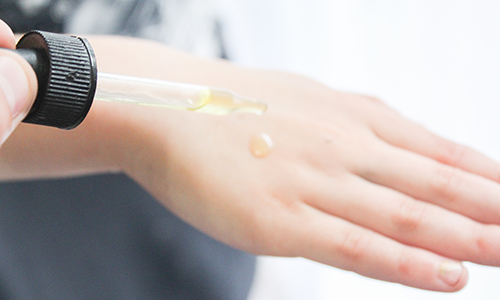
Store your Homemade Anti-Itch Oil in a cool, dry place away from sunlight, which can affect the essential oil’s properties.






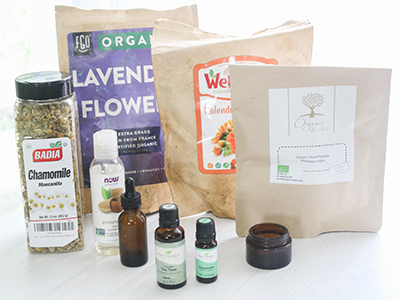 Ingredients
Ingredients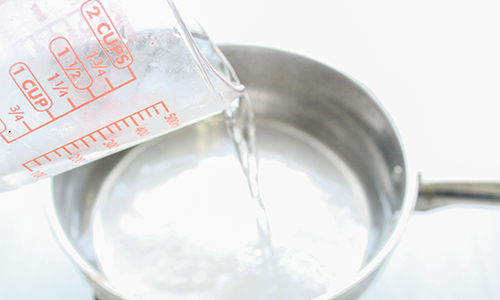
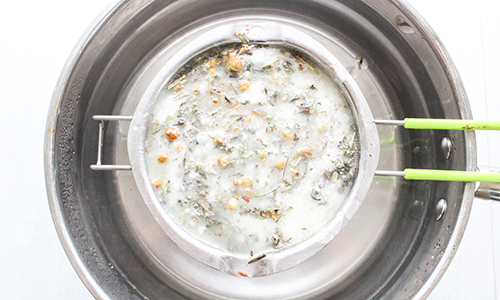
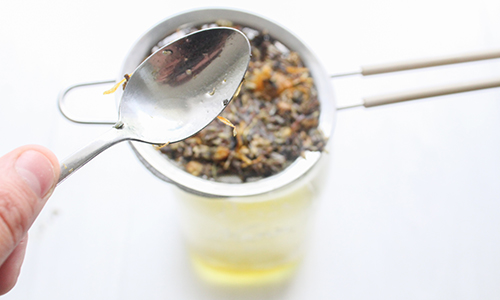
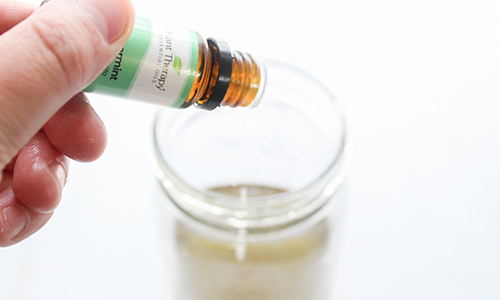
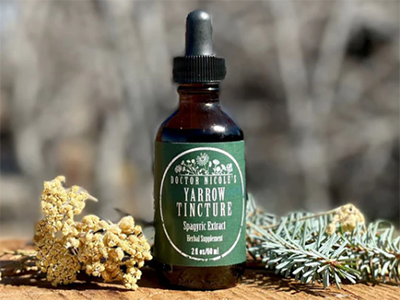
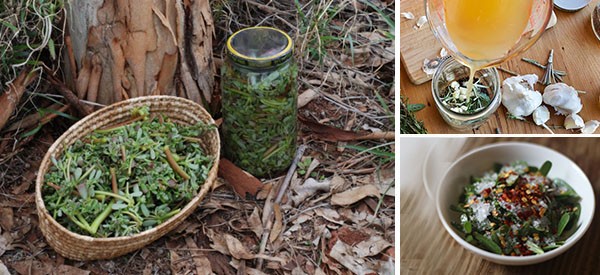
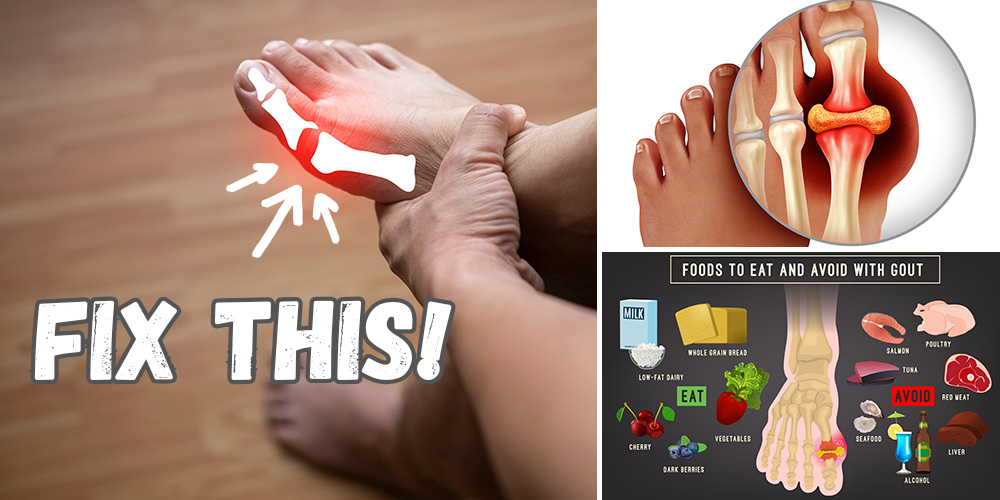

When do you add the yarrow tincture and how much?
We have loads of broad leaf plantain. I agree, we’re blessed. We harvest and use it often. Do you recommend freeze drying herbs? We currently regular freeze in freezer for use on burns during the winter or road rash for kids. Feels great on a skinned arm or rope burns when it’s frozen. Any other tips for us on the homestead with the plant? You and your articles have helped me and my extended family more than I can say here. This information has been an immense blessing! Thank you for sharing your knowledge and experiences with us. ♥️🪴 They are now being passed down and we have kids in training also. PS. I used to be a walking pharmacy…. Now, I’m pain free (mentally, physically, emotionally) and happy because of the all the plants and a chiropractor. Lol
Where does the yarrow tincture come in? And how much?
I also want to know when to add the yarrow tincture and how much?
You can’t add yarrow tincture to an oil recipe like this! Better to get some dried yarrow herb and infuse with the other dried herbs.
Several years ago my friends big dog jumped up on me + tore my entire arm open + it was gushing blood. I went back home across the street + soaked a thin cloth in yarrow oil I had for a few years. I was so blown away how quickly it healed. So between the yarrow + nano silver gel I was using. It didn’t take long to heal. Although I do have a 4″ scar. I never went to see a doctor. I have much health knowledge + always go first to natural way of healing. I was in the health food business for many years and learned so much.
Is this safe for dogs?
I think they are advertising the Yarrow as an alternative to making the oil yourself. If you look at the picture of the bottle at the bottom of the page it’s advertised as an Anti- Itch tincture. But I could be wrong but I’m going with what I see that it’s not added in the ingredient list.
You don’t use Thyme oil? I got some from the Amish and it works like none other. It’s a spray on mist bottle.
What they never tell you is how much it cost to buy all this stuff.